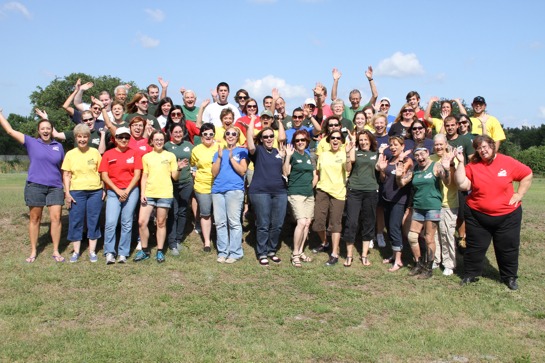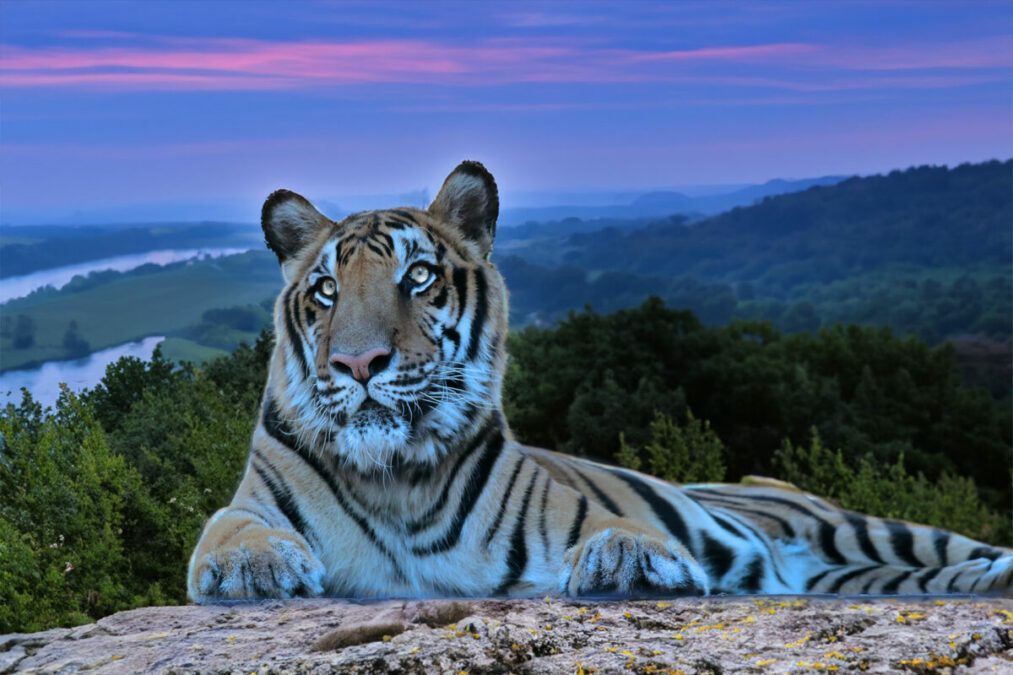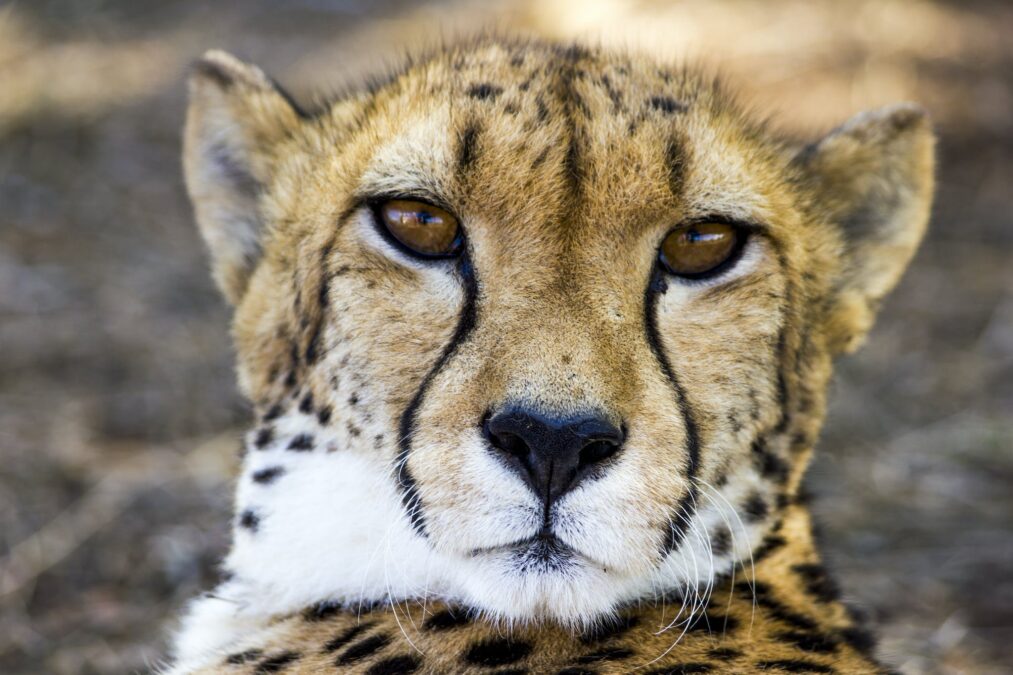2007 Annual Report
2007 Annual Report
Big Cat Rescue is more than just a place that provides permanent care for big cats. It is a movement; a change in the tide of human perceptions and is the combined effort of more than 74,000 supporters. If you are one of them, you are a Big Cat Rescuer and the following is the great work YOU did! If you haven’t helped yet, you can do so now at the top right of the screen or here: https://bigcatrescue.org/donate.htm
Big Cat Rescue’s Mission Statement:
To provide the best home we can for the animals in our care and to reduce the number of cats that suffer the fate of abuse, abandonment or extinction by teaching people about the plight of the cats, both in the wild and in captivity, and how they can help through their behavior and support of better laws to protect the cats.
Advances
 In late November we conquered the web site issues that have made our site inaccessible to all browsers other than Internet Explorer resulting in a 33% increase in the number of pages viewed by the 2,510,255 visitors to our bigcatrescue.org site in 2007 and 1,147,174 visitors to our www.CatLaws.com site for a total of 3,657,429 online visitors in 2007. Big Cat Rescue is increasingly listed in world wide publications as a “must see” in Tampa. Began the permitting process for the wall we have been raising money to build for the past 4 years.
In late November we conquered the web site issues that have made our site inaccessible to all browsers other than Internet Explorer resulting in a 33% increase in the number of pages viewed by the 2,510,255 visitors to our bigcatrescue.org site in 2007 and 1,147,174 visitors to our www.CatLaws.com site for a total of 3,657,429 online visitors in 2007. Big Cat Rescue is increasingly listed in world wide publications as a “must see” in Tampa. Began the permitting process for the wall we have been raising money to build for the past 4 years.
Big Cat Rescue has been accepted into the federal version of the Combined Federal Campaign. Where we could only be in the local books in years past, we will be in every book that goes out to government employees as a choice for their auto deduction giving. Not only were we accepted, but we were also awarded with the Best of the CFC seal. In the local market we receive upwards of $7,500.00 in donations, so we are hopeful that we will do even better by going national. We are extremely grateful for this opportunity and thank those of you who are participating
For the first time in our history, Big Cat Rescue offered a reward for information. When a tiger was found shot to death along side an apartment complex and busy highway in Dallas, TX on Christmas day, we announced a $5,000.00 reward for information resulting in the arrest and conviction of the people involved. The police and animal control authorities told us that they cannot offer such bounties and that our doing so greatly enhanced their ability to pursue the case. See the video plea https://bigcatrescue.org/video/b42008/5000reward.htm
Animal Care
Rescued four tigers left to die at the now defunct Savage Kingdom. (TJ, Bella, Modnic & Trucha) Watch this dramatic rescue here: https://bigcatrescue.org/video/b42008/savagekingdom.htm Built & remodeled cat-a-tats for them.
Rescued two lions (Joseph & Sasha) and two tigers (Nikita & Simba) from the now defunct Siberian Tiger Foundation which was nothing more than a thin guise for Pay to Play with tigers. Read about that rescue and see the video here: https://bigcatrescue.org/rescuelionsandtigers.htm Built & remodeled cat-a-tats for them.
Rescued four native bobcats in four weeks. (Ace, Chance, Kennedy & Will) Read about their rescue and what is being done to send them back to the wild here: https://bigcatrescue.org/rehabbobcats2007.htm Built & remodeled cat-a-tats for them.
Rescued a Savannah cat (Diablo) who was abandoned and living in an animal shelter that was not designed for long term care of exotic cats. Assisted in the rescue of another Serval and Bobcat and another two Tigers, finding them permanent homes in facilities that meet the guidelines set out at https://www.sanctuarystandards.com/
Vernon Stairs finished all of the new safety entrances to cages. He built tunnels on the lions cages, Precious Bobcat and The Great Pretender Bobcat, and others to enable easy shifting and introductions. Vern doubled the size of Jumanji the leopard’s cage and added a cave and mountain. He joined a number of cages to each other to provide more room for the cats to roam. Catera Bobcat got to move in next to his mom and dad in a huge double sided enclosure.
Began renovations to Auroara the tiger’s 1 acre, lakefront home to provide better drainage and a hurricane room. Began work on a hurricane shelter for Nyla leopard after moving her next to her brother, Simba after years of them being separated.
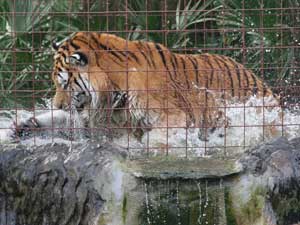 Moved Bailey Bobcat in with Anasazi and Moses the Bobcats. Moved Rose Caracal to a double cage and introduced her to Cachanga Caracal. Moved the African Civets to Bailey’s old cage after it was civet-ized. Reintroduced Dances with Wolves and Shatia the Canada Lynxes. Our cats are altered so that no accidental births will occur from these groupings.
Moved Bailey Bobcat in with Anasazi and Moses the Bobcats. Moved Rose Caracal to a double cage and introduced her to Cachanga Caracal. Moved the African Civets to Bailey’s old cage after it was civet-ized. Reintroduced Dances with Wolves and Shatia the Canada Lynxes. Our cats are altered so that no accidental births will occur from these groupings.
Spayed Zabu the white tigress and Bella the tigress. https://bigcatrescue.org/video/00143.htm
Raked the entire park before freezing weather to try and kill fleas and eggs and may switch products again as efficacy is fading. Refurbished all 18 pools and one of them twice thanks to TJ the tiger being an absolute maniac when it comes to chasing fish.
Every year the cats get pumpkins to smash after Halloween https://bigcatrescue.org/video/00062.htm, but this year they also got Christmas trees https://bigcatrescue.org/video/00162.htm.
Staff and Volunteer Training
In addition to our monthly, on site volunteer training courses, Tiffany Deavor took several online training courses, Scott Lope and Dr. Liz Wynn are scheduled for Safe Capture course, Sharyn Beach, Howard & Carole Baskin and Susan Mitchell attended D.C. conference on effective grass roots efforts. Carole continues to take online courses and audio seminars to enhance her efficacy in legislation and leadership. Fine tuned some of our training methods and tracking.
Education
Joined the International Tiger Coalition with the mission of preserving 10,000 tigers in the wild in the next ten years. More about that here: https://bigcatrescue.org/internationaltigercoalition.htm
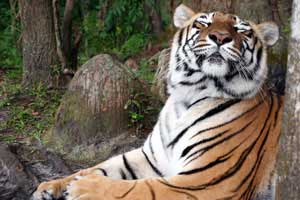 Assisted WNET and SeaStudios.org in ascertaining the number of big cats in the U.S. for their film about a world without humans. As there is no government agency responsible for tracking these animals, it falls to anecdotal evidence that we have been compiling for many years.
Assisted WNET and SeaStudios.org in ascertaining the number of big cats in the U.S. for their film about a world without humans. As there is no government agency responsible for tracking these animals, it falls to anecdotal evidence that we have been compiling for many years.
The illegal portion of the 15 billion dollar trade in exotic pets is second only to the market for illegal drugs. In 2005, some 210 million wild animals were brought legally into the U.S. and many more were smuggled, because there are just 120 USFWS inspectors to cover 39 International airports and all of the border crossings. In just the legal importations, that means each inspector must view and approve the health of almost 15,000 animals per day, every day of the year. Big Cat Rescue provided the photos and resources for an eBay guide to let buyers and sellers know that it is illegal to trade in many exotic cat furs. You can read the guide HERE We also provided this information to the World Wildlife Fund in Poland to enable them to train their border guards to recognize endangered cat species that are frequently smuggled through customs. Provided bobcat and Canada lynx photos and info for a scientific training / educational presentation on wildlife awareness for Environment Canada.
Cambridge University Press selected Carole Baskin’s article on Cause Related Marketing for their Professional English in Use Series textbooks called Professional English in Use – Marketing. It is a new addition to the Profession English in Use Series that is a self study reference book that will be used for classroom work and tutoring. Cambridge included Baskin in their 2008 Who’s Who Among Executive and Professional Women “Honors Edition.” as well.
We implemented our first Artificial Intelligence V-host on a page called Ask the Cat where you can type in any question and the virtual cat will answer you in an intelligent way: https://bigcatrescue.org/askthecat.htm All of our species information pages were recorded and now each page offers the visitor the opportunity to read and/or listen to the information. This can be downloaded onto mP3 players as well.
Jamie Veronica’s photos of cougars were requested by wildlife biologist Anna Huckabee Smith, AWB for use in her 5 year status report for USFWS and Wildlife Trends which will be covering the topic of captive cougars being turned loose when they are no longer wanted as pets.
We harnessed the powerful mapping technology available with google maps and posted online, interactive maps that show the accredited and non accredited facilities (mostly back yard pet owners) who keep dangerous big cats. It took four maps to hold all of the information, but they can all be accessed online here: https://bigcatrescue.org/map.htm This was offered to the FWC as they had stated they would be releasing this data online soon, several months ago, and this saved them the time and effort. It will be helpful to the media when tracking maulings, killings and escapes and to emergency response personnel in the event of natural disasters. Until now, this information has not been immediately accessible to fire fighters, the police or animal services.
Visitors In 2007 Big Cat Rescue had 26,497 visitors for guided tours. 16,424 were adult tours that generated $409,587.03 which is up 2.62% from last year. Our biggest leap was in our kids tours for families with children under the age of 10 and with 3,271 participants that was up 44.31% and generated $54,668.60. All of our tours are guided and are educational. Our Education Program also convenes camps, special field trips and such and those were attended by 4,969 and generated $66,309.71 which is an increase of 15.37%. In keeping with our desire to give back to the community we provided 27 free field trips for Title One schools and others on a needs-based application.
Prices Because we were nearing capacity at the end of 2006 we raised our prices considerably in 2007. This slowed our growth sufficiently to keep the sanctuary a serene home for the cats but increased our bottom line. Prices were raised from $20 to $25 for adults and from $12 to $15 for children under ten. All of our specialty tours were raised to $50 from $25. Our supporters understand that as word spreads about Big Cat Rescue being such a magical experience people have been flocking here, and that we had to raise the prices in order to keep the number of guests down to a reasonable roar. The added benefit is that people who visit really are committed to the animals and we are not just another tourist attraction.
Legislation/Education
Presented testimony, statistics and charts to the Florida Wildlife Conservation Commissioners in Destin, Key Largo and St. Petersburg, asking to ban contact with big cats and their babies and to allow counties to enact more restrictive rules to protect the animals and the public. Presented testimony, statistics and charts many times to their staff at planning sessions before and after the Commission meetings. Provided the same to the Coalition Against Wildlife Trafficking.
Testified at a Congressional briefing about the need for Haley’s Act, a bill to ban contact with big cats. The International Fund for Animal Welfare liked the presentation materials so much that they asked permission to reproduce them for their own legislative use, which was, of course, granted. Presented a slide show on using the secret, the law of attraction, to assist in lobbying efforts in the exhibit hall at the Taking Action for Animals conference in Washington, DC. There were 950 registrants and many more visitors throughout the two day exhibit.
Through our online video marketing we are educating more people in a week than we have visit the sanctuary in a year! We are changing the way people think about animals and as a result they are acting more compassionately. The recent outcry at Michael Vick’s involvement in dog fighting shows that people care about animals more than ever before. As wonderful as that is, however, it isn’t enough.
Martin Luther King, Jr. said, “Legislation can’t change the heart, but it can restrain the heartless.” Knowing this to be the case, we are using our online marketing to change legislation too.
In December 2003 we had to turn away more than 300 unwanted big cats and every other year that number was doubling. That same year a new law, that we helped pass, banned the sale of big cats as pets across state lines. The following year, for the first time ever, the number of abandoned big cats dropped to 160. We decided, then and there, the only way to stop the suffering and abuse was through the creation of better laws that would ban the private ownership of lions, tigers and cougars as pets. Thanks to the laws enacted below, the number of abandoned big cats in 2007 has dropped to 72.
By December of 2004 we launched a new section of our website www.CatLaws.com that would enable people to learn about pending bills and enable them to connect to their lawmakers to ask for laws that would protect our communities while ending the suffering and abuse of big cats. We believed that if people knew what was happening and knew how to help that they would.
Directing the traffic to the legislative sections had to be more creative however, because by and large, people don’t want to think about politics. The cat’s stories and their photographs had to be compelling enough to overcome this typical aversion to legal matters and we feel that we have had considerable success in doing that since we have been able to track 1,147,174 visitors to our legislative pages in 2007. The combined number of visitors, between our main web site bigcatrescue.org and our legislative website, is now 10,020 visitors per day with an average of 4 pages viewed by each visitor or roughly 40,000 page views per day. Our peak day in 2007 was March 15 with 55,184 page views.
The next step was to get a person to take action by composing a letter to their congressman and that is even harder yet, but we believe the numbers speak for themselves: 33,596 letters were successfully sent from the legislative site asking for better laws to protect the community and to end the suffering and abuse of big cats kept in backyards and basements. The Legislative Action Center report shows a steady, quarterly increase.
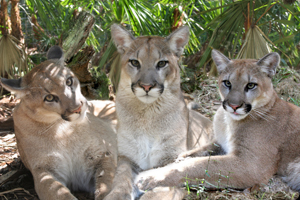 The results are measurable in more than just statistics however. In the past 2 years seven states banned the private possession and barter in big cats and the numbers we have to turn away continue to drop. The USDA has issued policy statements against the private ownership of big cats and against heretofore accepted practices such as walking a 500 pound cat on a leash in public and allowing people to pet big cats at fairs, malls, parking lots and schools. Details on these here: https://bigcatrescue.org/lawsbigcatbans.htm
The results are measurable in more than just statistics however. In the past 2 years seven states banned the private possession and barter in big cats and the numbers we have to turn away continue to drop. The USDA has issued policy statements against the private ownership of big cats and against heretofore accepted practices such as walking a 500 pound cat on a leash in public and allowing people to pet big cats at fairs, malls, parking lots and schools. Details on these here: https://bigcatrescue.org/lawsbigcatbans.htm
USDI issued their new rules that went into effect in September 2007 that ban the transportation of big cats across state lines by non USDA entities. They also defined a sanctuary as a place that provides a permanent home and does not breed, sell, trade nor allow public contact with the big cats. Before now there was no definition of a sanctuary and many places that were adding to the problem were doing so under the guise of being sanctuaries. The language used by USDI is practically verbatim from our web sites at bigcatrescue.org and SanctuaryStandards.com. https://bigcatrescue.org/laws/lawscaptivewildanimalsafetyact.htm
In 2007 the Florida legislature unanimously agreed to impose a $10,000 bond on anyone in the state who exhibits big cats. This bond is used as a surety in the case of injury to the public and can be used by the FWC to care for dangerous wild animals when they have been abandoned. Big Cat Rescue had been a strong proponent of this bond and our supporters, via our CatLaws.com site had made their wishes known to their legislators. On July 2 Governor Charlie Crist signed the bond requirement into law and the FWC drafted the rules to enforce the new law in 2007.
The Florida Wildlife Conservation Commission put together a task force to review their policies that still allow the breeding and selling of big cats in the state with only the addition of a $40.00 USDA permit. Public opinion polls on our web site indicate that 76% of those polled would support a ban on all exotic animals as pets. That same percentage also agrees that hunting should be outlawed. Florida’s Wildlife Conservation Commission is funded almost entirely by issuing hunting permits and permits to people to own exotic animals so the fact that they are reviewing their own policies in view of changing public opinion is certainly measurable evidence of Big Cat Rescue’s impact on this very serious situation.
The FWC staff announced that they are making recommendations to the Commissioners that include proposed rules:
1. Raise the classification of a cougar from a Class II pet to a Class I animal that may not be kept as a pet.
2. Prohibit contact between big cats and their babies in accordance with the new federal bill that is pending which would ban the practice.
3. Prohibit transport of big cats to flea markets, parking lots, etc.
4. Require that exhibitors have all of their animals on exhibit as there is a current issue of meeting the letter of the law by exhibiting one animal while warehousing dozens more in minimum size cages that would appall the public.
5. Require Class II owners to secure a $10,000.00 bond as is now required for Class I.
As mentioned above, there is a federal bill called Haley’s Act HR 1947 that is gaining momentum in the U.S. House and is expected to pass this session. This bill is being broadly marketed by Big Cat Rescue because it will ban contact between the public and big cats, including their babies. Baby tigers and baby lions are bred to be used as photo props and for petting sessions and then are discarded when they get too big. This bill would stop the unscrupulous breeding for this industry and ultimately would end the biggest cause of the over abundance of big cats in captivity.
Using the email targeting feature of the CatLaws.com site we were able to convince the Medieval Fair to not allow a shabby traveling circus to set up shop by having our supporters write Hunsader Farms, the owner of the property, and telling them how they feel about such abuse. 3,236 of our online supporters sent letters to the Chinese government urging them to ban the farming of captive tigers for their fur, bones and organs.
All of these advances have been made possible by getting our message out to the people who can make a difference. See below how we got the message out.
Fundraising and Marketing
We were in the press 85 times. Howard Baskin was featured in the Nov. 5th issue of U.S. News & World Report for his charitable work with Big Cat Rescue. https://bigcatrescue.org/000news/aboutbcr/usnewsandworldreport.htm Scott Lope was quoted in Newsweek about the escape of Tatiana the tiger from a zoo where she mauled three young men and killed a teenage boy. https://www.newsweek.com/id/82067/page/1
Awards In January of 2007 Big Cat Rescue was awarded the People’s Choice Award by WEDU, our local PBS affiliate. We won again in Jan. 2008. More than 80 charities competed in a 16 county radius for this award, but Big Cat Rescue took 31% of the vote. Next year the contest is going national. Won Parenting Magazine’s Best of Tampa Bay Award. In August Big Cat Rescue was Change.org’s Pick of the Month.
TV Animal Planet show called Ms. Adventure aired our episode in March and Real Strange aired in Europe. The first episode of “Big Cat Rescuers” ever aired on: April 11, 2007 cable channel 19 7:00 PM and April 15, 2007 cable channel 20 6:30 PM. This one hour episode was created by our own Jamie Veronica, Brian Czarnik and Honey Wayton, and features several of our keepers, partners and of course, Scott Lope our manager. Our big cat expert Scott Lope was interviewed on the History Channel’s MonsterQuest‘s search for the elusive big black cats that are frequently reported roaming wild all across the U.S.
Roar and Rolling Lindy Melendez with EGS Printing has generously donated a van “wrap” that is valued at $5000. See the stunning artwork here: https://bigcatrescue.org/images/EasySt/van/index.htm The wrap was done with a lot of love from everyone at ESG Printing.
Memory Lane Our cemetery was transformed from a pitiful little hodgepodge of cage placards to a wall of memories created in stone and inlaid with marble headstones that feature a laser inscribed image of the cat, his or her date of birth and death and the sponsor of the plaque. This was done as a fund raiser for the living cats and in its first year generated enough money to support a tiger for a year. Thanks to Babs Riddle the grounds were luxuriously sculpted to include gardens, a shell path and benches where our volunteers can rest and reflect on the lives they have known who continue to inspire them. Great marble lions that were donated to us now flank either side of the impressive entrance. https://bigcatrescue.org/foreverremembered.htm
Google In today’s fast paced environment we have to stay quick as a cat and be as entertaining as a basket full of kittens. We have found mini videos, or podcasting, to be our most effective way of marketing our message. On July 8, 2006 we launched our first video on google. We now have 195 live videos playing and have had 183,514 viewers. Our most popular video is an hour long film about all of the plights faced by exotic cats in the wild and in captivity and it has been played 51,357 times. None of our tracking can tell how many times people play our videos on their iPods after downloading them.
YouTube (the fastest growing web site in the world) In August of 2006 we launched our YouTube account and have 72 of our videos playing that have been viewed 1,752,846 times. We have 881 subscribers to our videos with more joining all the time and are the #2 Most Viewed (All Time) – Non Profit and #9 – Most Subscribed (All Time) – Non Profit. In late December we launched two additional sites dedicated to our Educational Department and our Animal Communicator.
MySpace myspace.com/1BigCatRescue In August of 2006 we launched our MySpace account and are one of the top ranked sites as we have 221,617,683 in our network who have visited our profile page 22,928 times and we have 4,276 subscribers to our videos there. MySpace has become such a popular portal that it now ranks in the top 10 list of referring sites that send visitors to our main website at bigcatrescue.org. That ranks our own MySpace account just behind such powerful referrers as the google, yahoo and aol search engines.
VEOH In 2007 we began posting our videos to Veoh.com We have 143 videos playing and these videos are getting thousands of plays each. Veoh is the next generation in T. V. viewing. Videos can be watched in low resolution for free, or for a fee can be downloaded in high resolution and watched on a television set or computer. We post most of our videos as a free download, but post PSA’s in high resolution so that the media can get b-roll from us instantly for less than the cost of mailing a disk.
We now film, edit and post 1-2 videos each week. Our videos have been so popular that they have been picked up for use on Current TV and many online content providers. In addition to our online video marketing we have been in the press 427 times and if you haven’t heard of the Fur Ball, you don’t watch TV, listen to the radio or read the papers. We have been blessed with complimentary ads from all of the biggest media outlets such as Cox Radio, The Tampa Tribune, The Tampabay Business Journal, the Maddux Report and the St. Pete Times to market our biggest annual fundraiser each year. We also have Public Service Announcements running on Brighthouse cable TV and nationally on Animal Planet.
Search Engine Ranking Our goal was to increase the number of web visitors by increasing our web site’s visibility on the Internet. The most dramatic breakthrough was in revamping the underlying html so that browsers other than IE could view the site. The second more important feature was implementing navigation that enabled visitors to see every level of our 12,000+ file site. Even though this was not accomplished until November the pages viewed increased 33% in 2007 when the even though the number of new visitors only increased by 12%. For the first time in history we have risen to the top page of google’s search page for the keyword “tigers” and are number 18 of more than 43,000,000 competing sites. To see the ranking on our most important key words visit: https://bigcatrescue.org/get_more_hits.htm
 Party of the Year That’s what a lot of people in the know call it. The Fur Ball netted more than $120,000.00 with a sell out crowd of 700 people. That’s up $80,000.00 over last year! See the entire recap including photos of Bo Derek and our colorful, cat themed guests here: https://bigcatrescue.org/000archives/2007FurBall.htm
Party of the Year That’s what a lot of people in the know call it. The Fur Ball netted more than $120,000.00 with a sell out crowd of 700 people. That’s up $80,000.00 over last year! See the entire recap including photos of Bo Derek and our colorful, cat themed guests here: https://bigcatrescue.org/000archives/2007FurBall.htm
Saving Wild Places for Wild Cats
The Jaguar Trust Trapping is the furthest thing from our mission, except when it comes to camera traps for tracking and aiding wildlife. Our own Big Cat Rescue president Jamie Veronica went to Guyana, South America with a fellow volunteer on a mission for the sanctuary. Jamie and Justin Boorstein were in Guyana for ten days setting new digital camera traps with video to track Jaguars, Ocelots and Pumas. Our partner, Foster Parrots, tells us that with the recent import ban of all birds into Europe, Guyana now finds herself in a position to change the long practiced wildlife export industry there. Many trappers are finding that there are no markets for their “products”! Many of these trappers now find themselves unemployed and the government may start to look at the potential revenues of eco-tourism to fill the gap. If we can make a concerted effort with our conservation project we hope to serve as an example and to garner the support of Guyana to create the world’s premier rainforest destination. Our plans include the promotion of our project here in the US and a marketing strategy to heighten the visibility of this important move in Guyana.
Visitors to Guyana will have a choice of tour itineraries ranging from an ambitious 3 and 4-day Kanuku Mountains hike that will bring them to the realm of the Harpy Eagle, to more leisurely tours that will encompass sightings of Red Bellied, Scarlet, Red and Green, Blue and Yellow Macaws, Giant Anteaters and a wide variety of primates. Horseback and canoe excursions will let tour groups experience the wilds of Guyana at an intimate level. Visitors can also travel to Kaeiteur Falls to witness one of the world’s tallest single-drop waterfalls of 741 feet. Construction on the first of two planned lodge complexes, located in Nappi Village, has been completed by the local tribes with funds from Foster Parrots and Big Cat Rescue. Contact SaveTheCats@bigcatrescue.org to spend your vacation dollars saving the wildcats in the rainforest.
Africa President Jamie Veronica and volunteer Barbara Stairs also toured Africa to see the issues first hand that have resulted in game parks being virtually the only lands left that house wild cats. She will work with relatives there to check out sources for offering handmade products in our gift shop that could help preserve wildlife there as we currently do in the Jaguar Trust. (Barbara Stairs funded this excursion)
Since 2005 Big Cat Rescue has provided both funds and volunteers to the Lewa Wildlife Conservancy in Kenya . Lewa relocates problematic wildlife to protected areas and provides education to children in the area who would not otherwise be able to read or write. In addition to the funds that Big Cat Rescue donates, we also provide a U.S. market for Kenya ‘s craftsmen and send clothing with our volunteers to distribute when they visit. Our volunteers take their skills and attitudes of compassion for all life into these barren regions and share a message of hope.
China, India, Kyrgyz Republic, Mongolia and Pakistan: Every year since 1997 Big Cat Rescue has donated to the countries that are home to the Himalayan mountain range where the elusive snow leopard is found. One whole corner of the gift shop explains how the sale of items made by the villagers helps save the snow leopard in the wild. In 2006, Dr. Tom McCarthy, the Conservation Director for the Snow Leopard Trust, came to Big Cat Rescue to explain just how crucial each sale was to protect of these exquisite cats.
The snow leopard lives in regions where the average person makes the equivalent of $1.00 per day. Most of the people who share the same highlands with the snow leopard are herders and to them, the loss of one sheep or goat can mean the difference in their survival. Most of the snow leopards that are killed are retribution killings; meaning that the cat has been blamed for killing one of the herd and the herdsman has killed the next snow leopard he saw. The herdsman can eat the cat and sell the hide for 25.00 which for them is a month’s wage. There are many other middle men along the way who are anxious to get their hands on a snow leopard pelt or penis for the Asian medicinal trade or for the black market. The pelt dramatically becomes more valuable as it goes down the line and can cost $5,000.00 or more to the final buyer.
 The Snow Leopard Trust members in China, India, Kyrgyz Republic, Mongolia and Pakistan work closely with the local people to find out what they need. In some cases, they can create handicrafts like those we sell and make five times what they can make from herding.
The Snow Leopard Trust members in China, India, Kyrgyz Republic, Mongolia and Pakistan work closely with the local people to find out what they need. In some cases, they can create handicrafts like those we sell and make five times what they can make from herding.
The programs are structured with reducing reliance on Snow Leopard Trust funds for each consecutive year and to remain in the program the community must ensure that no snow leopards are killed. If anyone in the community kills a snow leopard, the entire community risks losing their right to participate in the program for a year and that is enough to keep everyone watching out for the snow leopard. Their claims of protection must verified by the game wardens and governmental agencies who actually have incentives to discover poaching because they are often paid a portion of the confiscation if they can catch a poacher.
Big Cat Rescue is the second largest retailer for Snow Leopard Enterprises.
We collected fecal samples from our captive snow leopards for the Snow Leopard Trust to use in training dogs to be able to tell one wild snow leopard from another just by sniffing the scat left behind. This will greatly enhance conservation efforts and is a cost effective method as well. The video we produced is being aired on our sites, and also being used as a marketing tool for the new program and the Snow Leopard Trust.
The U.S. State Department enlisted our help in saving the critically endangered Amur Leopard because of our ability to reach so many people who care about wild cats and their habitat. You can learn all about what is happening with the Amur Leopard & Tiger here: https://bigcatrescue.org/cats/wild/leopard_save.htm
For more details on our International work visit: https://bigcatrescue.org/000archives/2007AttachmentAInternational.htm
Other
Big cat breeders, dealers, collectors and exploiters hate us because as we educate the public about the truth behind their abusive practices such as breeding white tigers, ligers or babies for photo booths their profiteering opportunities are drying up. There is no justification for their activities so their only recourse has been to file a plethora of false complaints with authorities who regulate us and to make false accusations to anyone who will listen. The only gain they could expect was to keep us busy proving ourselves so that we would be diverted from our mission of ending the abuses that result in so many unwanted big cats. Now the regulators are on to them as we have proven time and again our integrity which is illustrated in our perfect inspection reports and our continued accreditation by The Global Federation of Sanctuaries and the Better Business Bureau. Only one media outlet in 2007 repeated their slanderous accusations, but the article went on for many pages explaining that the reason such libelous statements are made is likely due to our success in exposing the activities that result in Florida having the highest incidents of maulings, killings and escapes by big cats.
Created pages devoted to the cats who have live and died in cages here with tributes from the keepers who loved them and who work ceaselessly for their freedom: https://sites.google.com/site/bigcattributes/home
Thanks to the work of our AdvoCat LaWanna Jones we added hundreds of new e-Cards here: https://www.bigcatfun.com/ecards/ and added hundreds of new online puzzles, new bookmarks and hundreds of new free online games here: https://bigcatrescue.org/game/games.htm
Then and Now Our CFO, Howard Baskin, compiled a ten year snapshot of the sanctuary and its growth. This is just a comparison between 1996 and 2007.
| Wildlife on Easy Street to Big Cat Rescue days | 1996 | 2006 |
| Visitors | 85 | 26,497 |
| Total Expenses | $1,686,386 * | $708,607.00 |
| Total Income | $0 | $1,236,237.00 |
| Total Net Assets | $148,455.00 | $2,419,227.00 |
| Spent on Program Services | 100% | 91% ** |
*funded by Founder **4% spent on Management and 5% spent on Fundraising
Officers and Members of the Board of Directors in 2007 and meetings:
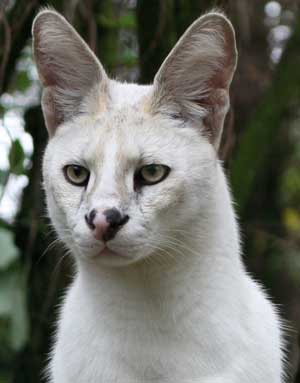 CEO and Founder Carole Baskin (not compensated by BCR)
CEO and Founder Carole Baskin (not compensated by BCR)
President and Chairman of the Board Jamie Veronica
Vice President & BOD Cathy Neumann (not compensated by BCR)
Secretary Jen Ruszczyk (not compensated by BCR)
Treasurer Howard Baskin (not compensated by BCR)
Director Dr. Liz Wynn, DVM (not compensated by BCR for her role as a Director)
These members met for monthly board meetings at the dates and places below:
Monthly board meeting, Tampa, FL; 1/6/2007
Monthly board meeting, Tampa, FL; 2/3/2007
Monthly board meeting, Tampa, FL; 3/3/2007
Monthly board meeting, Tampa, FL; 4/1/2007
Monthly board meeting, Tampa, FL; 5/7/2007 and 5/13/07
Monthly board meeting, Tampa, FL; 6/4/2007
Monthly board meeting, Tampa, FL; 7/1/2007
Monthly board meeting, Tampa, FL; 8/4/2007
Monthly board meeting, Tampa, FL; 9/1/2007 and 9/29/07
Monthly board meeting, Tampa, FL; 10/6/2007
Monthly board meeting, Tampa, FL: 11/4/2007
Monthly board meeting, Tampa, FL; 12/21/2007 and 12/28/07
Paid Staff:
We went from 3 paid staff to 7 and now provide worker’s comp insurance. We still can offer no other benefits than the peace of mind in knowing their work is changing the world.
Operations Manager & Volunteer Coordinator Scott Lope $35,000.00 incl. bonuses
Staff Manager, Editor & Creative Director Jamie Veronica $24,700.00 (compensated but not for her work as a member of the board)
Social Science Director Brian Czarnik $18,400.00 (leaving for Chicago early 2008)
Gift Shop & Guest Services Bridget Czarnik $18,400.00 (leaving for Chicago early 2008)
Gift Shop & Guest Services Honey Wayton $22,800.00
Intern Director & Lead AdvoCat Tiffany Deavor $25,000.00
Education Directors Dr. Beth Kamhi & Coleen Kremer $14,000.00 combined
Vernon Stairs Cage Builder and Maintenance $35,600.00
All of our animal care is done by volunteers or by staff who also volunteer time before & after work.
Volunteers:
Big Cat Rescue had 107 volunteers in 2007 who clocked in 57,302 man-power hours in addition to staff and Volunteer Committee member hours. Roughly the equivalent workforce of 27 more full time staff.
Created the S.A.V.E. award for Scratch’s Award 4 Volunteer Excellence. The recipients were January – Julie Hanan, February – Cathy Monroe, March – Tiffany Deavor, April – Glen Yancey, May – Kym Marszal, June – Merrill Kramer, July – Barbara Frank, August – Marie Schobert, September – Edith Parker, October – Babs Riddle, November – Anne Canterbury and December – Angie Gabor (the first Red Shirt to ever win) Winners of the S.A.V.E. award are allowed to direct $500.00 to the cat project of their choice.
Created pages devoted to our dedicated volunteers at: https://bigcatrescue.org/hero/000hero.htm and our 2007 Volunteer of the Year is Barbara Frank.



